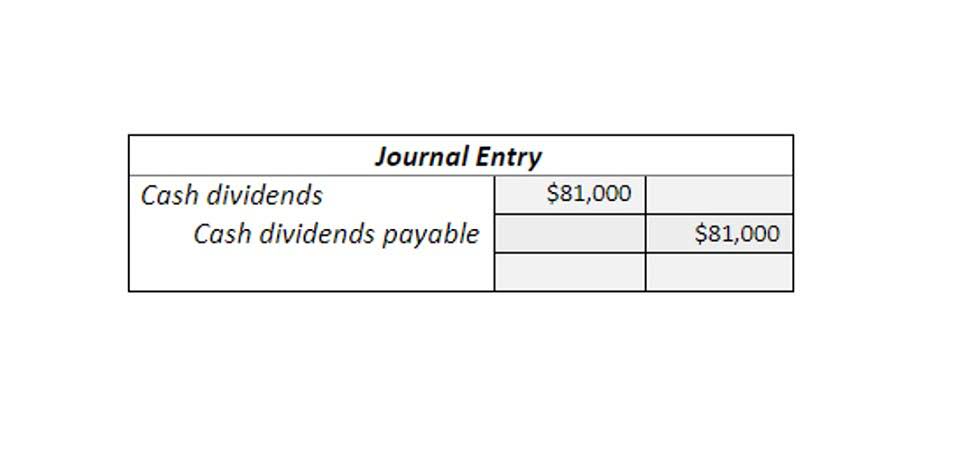7 1 Accounts Receivable and Net Realizable Value Financial Accounting

They arise from a variety of transactions, such as loans to customers or the sale of goods and services on credit terms. For recognition in financial statements, a note must meet certain criteria. It should be a legal, binding agreement, and the collection of the amount due must be reasonably assured. The Financial Accounting Standards Board (FASB) in the United States, through the Accounting Standards Codification (ASC), provides guidance on the recognition of notes receivable, typically under ASC 310 on receivables. However, for any receivables due in less than one year, this interest income component is usually insignificant.
- Since notes receivable have a longer duration than accounts receivable, they usually require the maker to pay interest in addition to the principle, at the maturity of the note.
- The final major asset category we will examine in detail is notes receivable, which, like investments, can either be a short-term or long-term asset, depending on the maturity date.
- Notes receivable maturity date depends on various factors such as company size, and the nature of goods or services supplied.
- The company will debit its current asset account Notes Receivable for the principal amount of $10,000.
- The interest rate is the part of a loan charged to the borrower, expressed as an annual percentage of the outstanding loan amount.
- In this case, the current asset account Note Receivable is used to keep track of amounts that are owed to the business.
Create a free account to unlock this Template
Notes receivable are assets and represent amounts due to a business by a third party (usually a customer). What distinguishes notes receivables from accounts receivable is that they are issued as a promissory note (a formal legal agreement given as a written note promising to pay principal plus interest at a specific date). Notes receivable are a balance sheet item that records the value of promissory notes that a business is owed and should receive payment for. A written promissory note gives the holder, or bearer, the right to receive the amount outlined in the legal agreement.
What are the important components of notes receivables?
This classification is crucial for assessing the company’s short-term liquidity and long-term financial stability. The placement of notes receivable on the balance sheet provides insight into the timing of future cash inflows, which is valuable information for investors and creditors. Notes receivable are written promissory notes that obligate a borrower to pay the lender a specified sum of money, either on demand or at a predetermined future date.
Notes Receivable vs Notes Payable

As discussed earlier, a note (also called a promissory note) is an unconditional written promise by a borrower to pay a definite sum of money to the lender (payee) on demand or on a specific date. A customer may give a note to a business for an amount due on an account receivable, or for the sale of a large item such as a refrigerator. Also, a business may give a note to a supplier in exchange for merchandise to sell or to a bank or an individual for a loan. Thus, a https://www.bookstime.com/ company may have notes receivable or notes payable arising from transactions with customers, suppliers, banks, or individuals. When examining a company’s balance sheet, notes receivable are typically categorized under current or non-current assets, depending on the maturity date of the promissory notes. Current notes receivable are expected to be settled within one year, while non-current notes have a longer term.
By now, we know how crucial it is for businesses to manage different types of receivables to ensure a steady cash flow. However, businesses deal with numerous complex transactions with multiple customers, which can sometimes be daunting to manage. With HighRadius’ Order to Cash software, businesses can easily navigate the complexities of managing receivables efficiently. Similarly, a note receivable gives the holder, or the lender, the right to receive the amount from the borrower. A Note Receivable is recorded when a company is on the “receiving” side of a debt.

It is similar to the maturity date of loans, representing a future point at which the borrower will repay the lender. If the note receivable is due within a year, it’s treated as a current asset, treated as non-current assets. Or, we can combine this entry with the journal entry for the repayment of the note. Rather than using Interest Receivable for the one day of interest in April, we record are notes receivable a current asset it as part of the cash payment, skipping the step of first entering it in the receivable. Accounts Receivable is a normal business transaction for between a company and its customer. The intent is for the debt to be settled in the normal course of business, usually in 30 days (depending on the terms of the account.) It typically does not have an interest rate.
- For example, let’s say the company’s note maturity date was 12 months instead of 24 (payment in full occurs December 31, 2018).
- Notes receivables describe promissory notes that represent loans paid from a company or business to another party.
- The principal value is $300,000, $100,000 of which is to be paid monthly.
- This is because the FV is the cash received at maturity or cash inflow (positive value), while the PV is the cash lent or a cash outflow (opposite or negative value).
- Analysts often scrutinize the aging schedule of notes receivable, which categorizes outstanding notes by their due dates.
When the investment in a note receivable becomes impaired for any reason, the receivable is re-measured at the present value of the currently expected cash flows at the loan’s original effective interest rate. The difference between a short-term note and a long-term note is the length of time to maturity. As the length of time to maturity of the note increases, the interest component becomes increasingly more significant. As a result, any notes receivable that are greater than one year to maturity are classified as long-term notes and require the use of present values to estimate their fair value at the time of issuance. After issuance, long-term notes receivable are measured at amortized cost.
For example, when the previously mentioned customer requested the $2,000 loan on January https://www.facebook.com/BooksTimeInc/ 1, 2018, terms of repayment included a maturity date of 24 months. This means that the loan will mature in two years, and the principal and interest are due at that time. The following journal entries occur at the note’s established start date. After the initial recognition, notes receivable are subject to subsequent measurement at each reporting date. The carrying amount of the note may be adjusted for amortization of discounts or premiums, and for any allowance for credit losses.

A Note Payable is recorded when a company is on the “paying” side of a debt. The difference in recording is based on which side of the transaction a company is on. In the following example, a company received a 60-day, 12% note for $1,000 from a customer on account on January 1.
